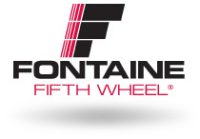The transportation industry plays a vital role in the global economy, ensuring the smooth movement of goods and services across vast distances. However, it also contributes significantly to air pollution and greenhouse gas emissions, primarily due to diesel-powered trucks. In recent years, there has been a growing awareness of the environmental impact of diesel trucks, leading to a push for cleaner and greener solutions. In a promising development, 57% of diesel trucks are now being transformed into near-zero emissions models, paving the way for a more sustainable future.
The Need for Sustainable Trucking:
The environmental impact of diesel trucks has been a cause for concern for decades. The emissions from diesel engines, such as nitrogen oxides (NOx) and particulate matter (PM), contribute to air pollution, smog formation, and adverse health effects. Additionally, diesel trucks are a significant source of greenhouse gas emissions, contributing to climate change.
The Rise of Near-Zero Emissions Models:
Recognizing the urgency to address these issues, the transportation industry has been actively exploring alternative technologies to reduce emissions. The introduction of near-zero emissions models is a significant milestone in this journey. These models utilize advanced technologies and alternative fuels to minimize harmful pollutants and greenhouse gas emissions.
1. The Emergence of Natural Gas Trucks:
One of the key developments in near-zero emissions models is the increasing adoption of natural gas trucks. These trucks use compressed natural gas (CNG) or liquefied natural gas (LNG) as fuel, significantly reducing both NOx and PM emissions. Natural gas is a cleaner-burning fuel compared to diesel, making it an attractive option for fleet operators looking to transition to cleaner technologies.
2. Electric Trucks: The Game-Changer:
Electric trucks have emerged as a game-changer in the quest for near-zero emissions models. These trucks run on electricity, producing zero tailpipe emissions. Rapid advancements in battery technology have led to increased range and improved charging infrastructure, addressing one of the initial challenges of electric truck adoption. Electric trucks offer not only environmental benefits but also lower operating costs, making them an appealing choice for fleet operators.
3. Hydrogen Fuel Cell Trucks:
Hydrogen fuel cell trucks represent another exciting avenue for near-zero emissions models. These trucks use hydrogen gas to produce electricity, with water vapor being the only emission. Hydrogen fuel cell technology has the potential to offer long-range capabilities and fast refueling times, making it a compelling option for long-haul transportation.
4. Government Incentives and Support:
The transition to near-zero emissions models has been facilitated by government incentives and support. Many governments around the world are offering financial incentives, tax credits, and grants to encourage the adoption of cleaner technologies. Such initiatives have played a crucial role in accelerating the transformation of diesel trucks into near-zero emissions models.
5. Industry Collaboration and Innovation:
Industry stakeholders, including truck manufacturers, technology companies, and fleet operators, are collaborating to drive innovation in near-zero emissions models. Partnerships between these entities have resulted in cutting-edge technologies and solutions, making the transition to cleaner trucks more feasible and practical.
Looking Towards a Greener Horizon:
The transformation of 57% of diesel trucks into near-zero emissions models is a significant achievement in the journey towards a greener and more sustainable transportation industry. While there is still a long way to go, this progress showcases the industry’s commitment to reducing its environmental footprint. As technologies continue to evolve and awareness grows, we can expect to see even more diesel trucks embracing near-zero emissions models in the coming years. The collective efforts of the transportation industry, supported by government policies and public awareness, will undoubtedly drive us towards a cleaner and greener horizon. By embracing these cleaner technologies, we can create a more sustainable future for generations to come.
Conclusion:
With 57% of diesel trucks embracing cleaner technologies, such as electrification and hydrogen fuel cells, the industry is making commendable progress in reducing greenhouse gas emissions and improving air quality. This transition not only benefits the environment but also offers economic advantages through lower operating costs and potential incentives.







